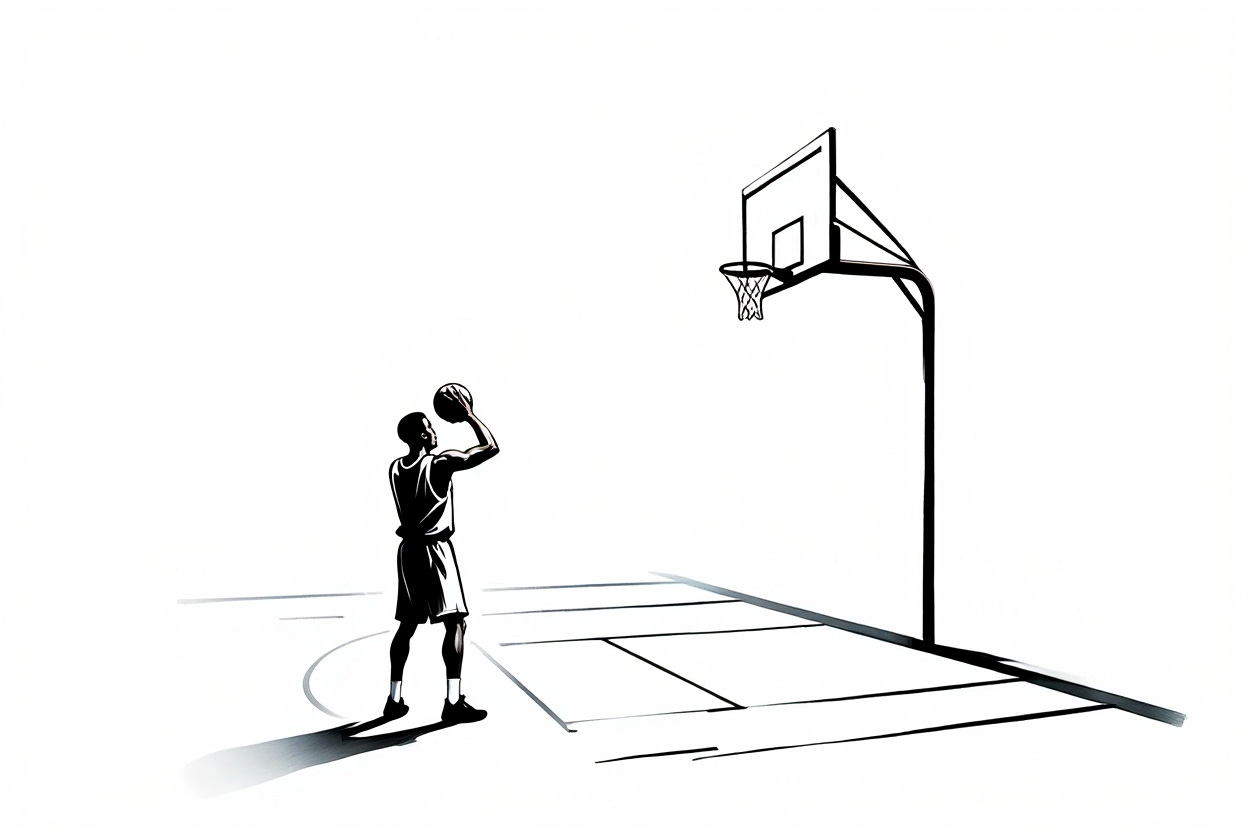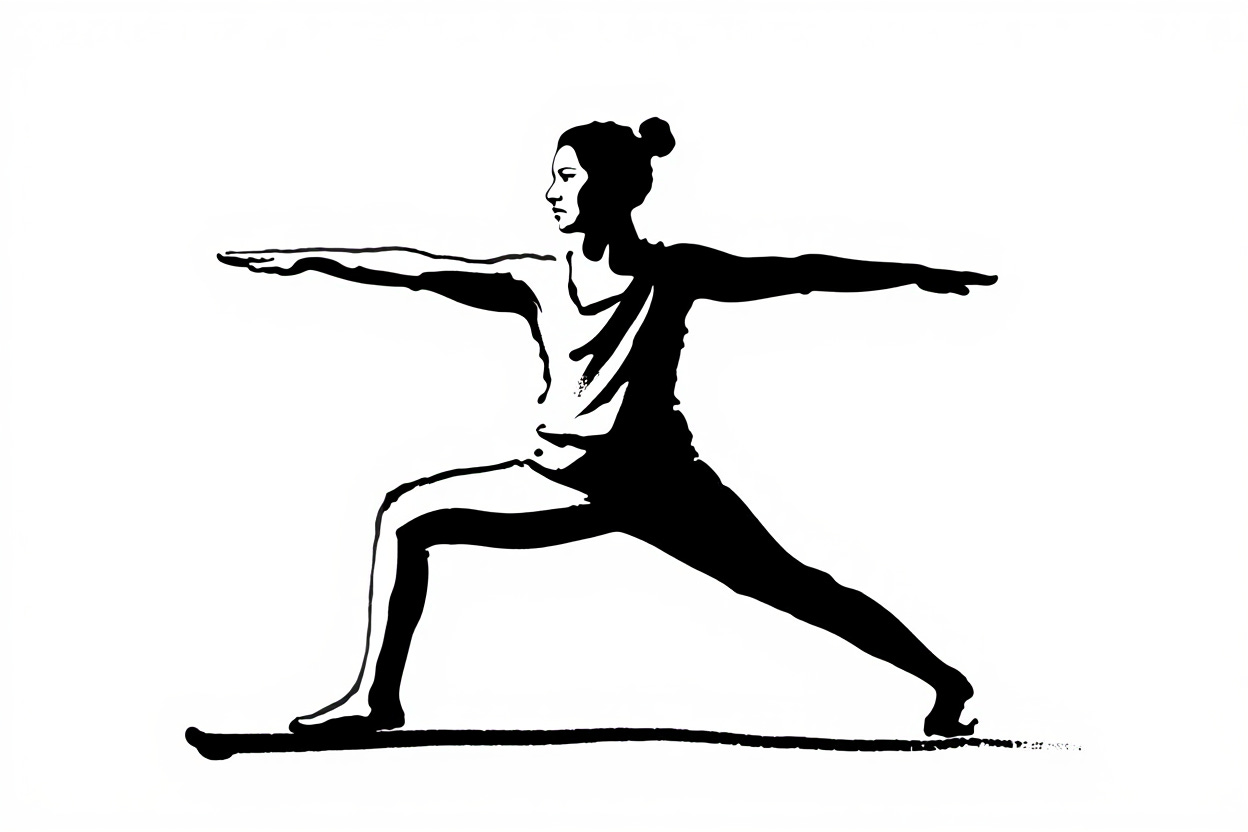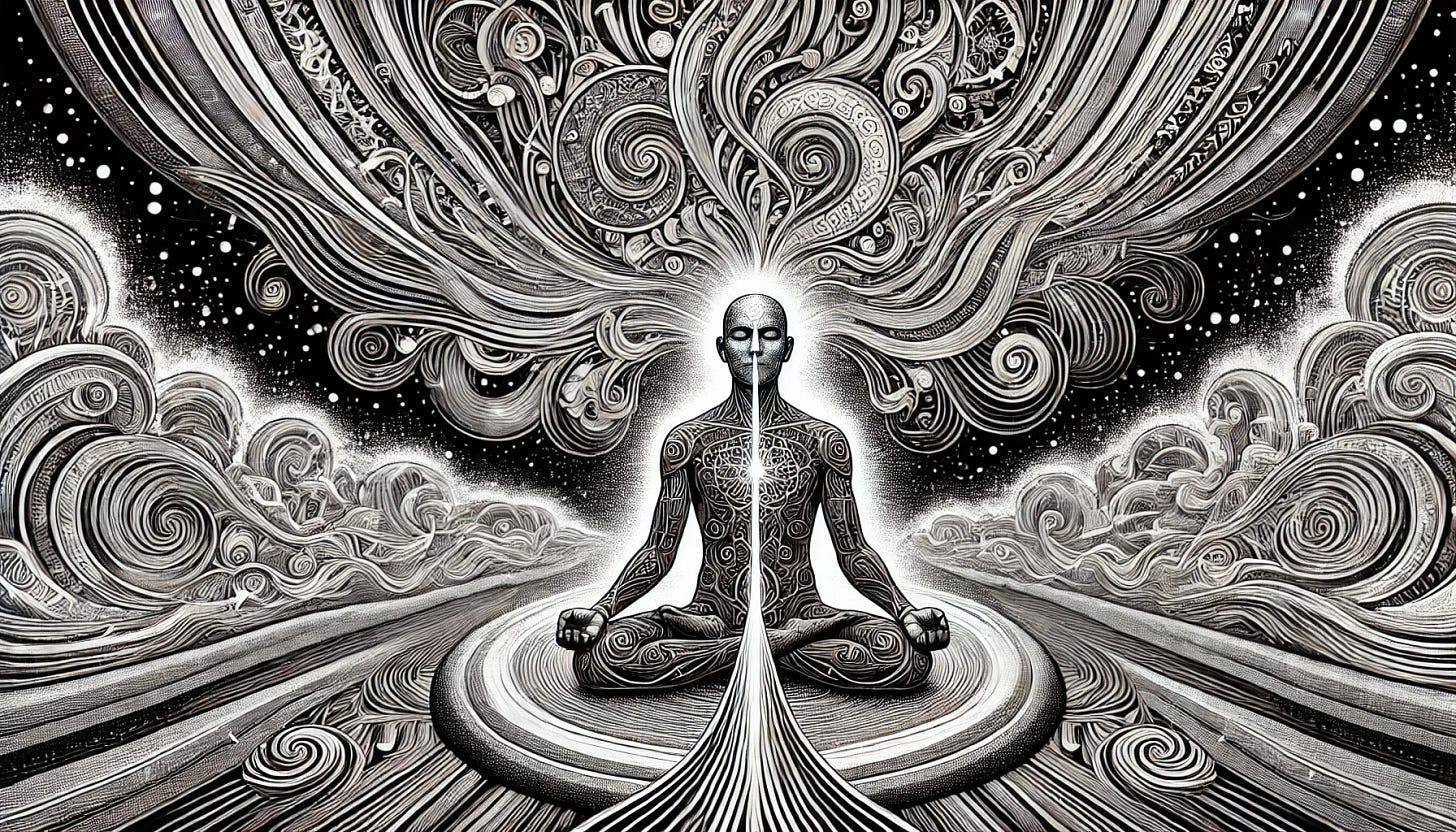If you’ve studied a little yoga, you’ve definitely heard the term “samadhi”.
As the 8th and final limb of the yogic path, the term is used to describe a state of “total absorption” that occurs after intense concentration and meditation.
But did you know there are different types of “samadhi”?
So, total absorption is set as the technical end point of yoga.
Of course, it’s not necessarily a linear path, and the 8 limbs are probably better thought of as a wheel / spiral staircase that — rather than a path traversing a distance — we more so circle the same principles at deeper and deeper levels over time.
Ok, total absorption…but, absorption in what?
And what exactly is the mechanism of absorbing? Am I being absorbed into something else, or is something else absorbing into me?
To a more classical read of yoga philosophy, it’s actually neither.
Following the Advaita (non-dual) tradition, samadhi is more accurately understood as when experience ceases to be defined by subject & object. There is nothing to fill because there is no difference between the container and the environment. The typical distinctions of consciousness (read: fluctuations of the mind) have been sufficiently softened so that one experiences purely from the preexisting space of awareness.
But that view of samadhi can feel a bit absolutist.
At first glance, there isn’t much room for progress along the way to that state of being, and I think for most of us living professional lifestyles, it can feel quite out of reach. That’s why I think the 17th sutra is one of the most practical in presenting yoga as an accessible path for spiritual growth.
Sutra 17
वितर्कविचारानन्दास्मितारूपानुगमात् संप्रज्ञातः
Vitarka-vichāra-ānanda-asmitā-rūpa-anugamāt samprajñātaḥ
Samprajñāta (differentiated/cognitive) samādhi is accompanied by reasoning, reflecting, rejoicing, and pure I-am-ness.
Patanjali states that this form of samadhi (samprajñāta: differentiated) includes reasoning & discernment alongside the everlasting bliss. Suddenly samadhi doesn’t feel so out of reach, right?
Likely the easiest modern comparison for what Patanjali describes in sutra 17 is the concept of “flow states”. If asked, you’d still know your name and address, but you’re really operating on a different wavelength where actions come fluidly and you’re not thinking about anything other than what you’re doing (the mind is clear in its presence with a particular object of attention).
Great musicians and athletes seem to describe these states of being during moments of peak performance. Years of practice and focus poured into a specific act translates into expression that transcends typical thought. Imagine being in Jimi Hendrix’s head during a show — I doubt you’d see him thinking “ok, B minor, E flat, put my finger there, strum twice” nor something like “I wonder what I’ll have for dinner after the show…” 😂.
Samprajñāta samadhi makes intuitive sense, and it’s culturally desirable.
Most great achievements in life seem to require this level of complete devotion and absorption in the present moment of whatever endeavor you’re taking on.
In a very basic sense, we practice the same elemental motions (of moving towards samprajñāta samadhi) in every yoga class. We train the attention onto a singular object (something very obvious in our physical experience like the breath or the sensations of movement). Then we try to use that focus to link together the various movements and postures as if they were one continuous flow.
Sri Swami Satchidanada presents 4 “gradations” that can be approached like steps for moving into this “differentiated” state of total absorption (samadhi). Basically, as we learn to train our focus onto a given object, this is meant to be the progression of where that focus lies:
The gross
The subtle
The space/joy
The I-am-ness
Of course, this is “gross” meant in the sense of what’s tactile and visible on the surface. The “subtle” is the non-tactile yet still possible to objectify in the mind (things like color, intuitions). The joy is meant as the feeling that arises in a clear mind that is somewhat aware of its own presence, and the I-am-ness is the fact of experience itself that can be witnessed with such a clear mind.
As an example, a basketball player:
Practices their shot form over and over until it becomes muscle memory
The more they play, they begin to learn to sense the right moment to take a 3 pointer
Feels the endorphin rush of being in action while on the floor and fully devoted to their task
Recognizes their experience as an individual that’s part of a team of players
As yogis, in every flow we:
Focus on the alignment of our bodies and moving attentively to our physical experience
Think: Sun A & Warrior 2 — where is my knee?
Learn to sense the subtler aspects of our experience against the backdrop of revisited postures
Think: Camel & Handstand — do I feel confident or vulnerable, why?
Watch the mind as it either settles into presence or is called away by distractions
Think: Tree & Seated Forward Fold — “this pose is easy, when will we move on? … ooh this feels so good on my hamstrings” vs. “just this breath, just this moment”
Release all efforts and allow ourselves to simply be in the space
Think: savasana — when all else is removed from my mind, what is left?
The beauty is that this movement (towards a tangible + somewhat measurable state of this total absorption/samadhi) is conveniently preparing us for non-differentiated states of samadhi, because:
You can’t just ‘let go’ of something you don’t realize you’re holding onto in the first place.
If someone says “release your grip on your ego, it’s an illusion!” how useful is that, really? It’s like telling a child “grow up!” or commanding a window to clean itself. Good luck! The truth is that it takes time and effort, and approaches that happen by degree are more likely to be maintained than steep climbs.
Said another way, a typical mind is like a person driving a car 60 mph down the freeway. The mind is cruising along, calling all the shots, and it’s presence carries both weight and inertia. If you want to get the person out of the car and you tell them: “get out of the car now!” they will simply not do it because it seems impossible in that moment. They’ll be killed!
Of course, it’s not impossible at all, but the immediacy of the request makes it seem so for someone who’s been traveling along as a passenger within it for so long.
Instead, you say:
— Slow down.
— Go to the right lane.
— Take this exit here.
— Missed it? No worries, take the next one.
— Find a quiet side street. Put it in park.
— Turn off the ignition.
— Take off your seatbelt.
— Open the door.
— Now, step on out.
Once they’ve arrived in the spot where relinquishing the container feels doable, they’ll try it. When you’re in a car that’s stopped, suddenly the motion is all on the outside. No longer are you an object moving through space, you are now part of the landscape, and you can see that it is itself, moving. Of course, they’ll get back in eventually (you’re in the middle of nowhere now and need to get back home). The mind helps us navigate the world.
This practice is about guiding ourselves back to that place over and over.
We learn to create the opportunity for release by training the focus down, through the gross, into the discrete, where the mind is reflected clearly, and the substrate of our conscious experience can be seen all around (and within) the object of our attention.
Once you’ve really noticed that object and have covered it fully with your attention (to the point that nothing else can occupy your mind), it’s just a simple shift of perspective to take that same absorption to the space in which that object seems to appear.
You can notice your inhale.
You can notice your exhale.
You can notice that both are part of one continuous breath.
You can revel in the experience of breathing.
You can even give breath to others.
But eventually you will let that breath go, one way or another —
What then, will be left?
We can realize ourselves as that, right now.







